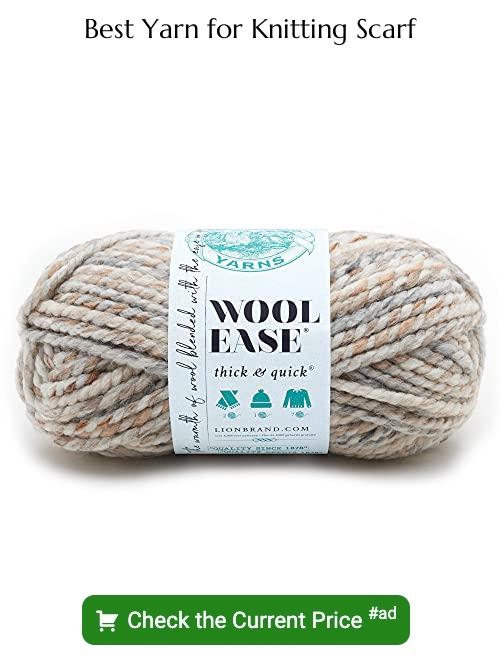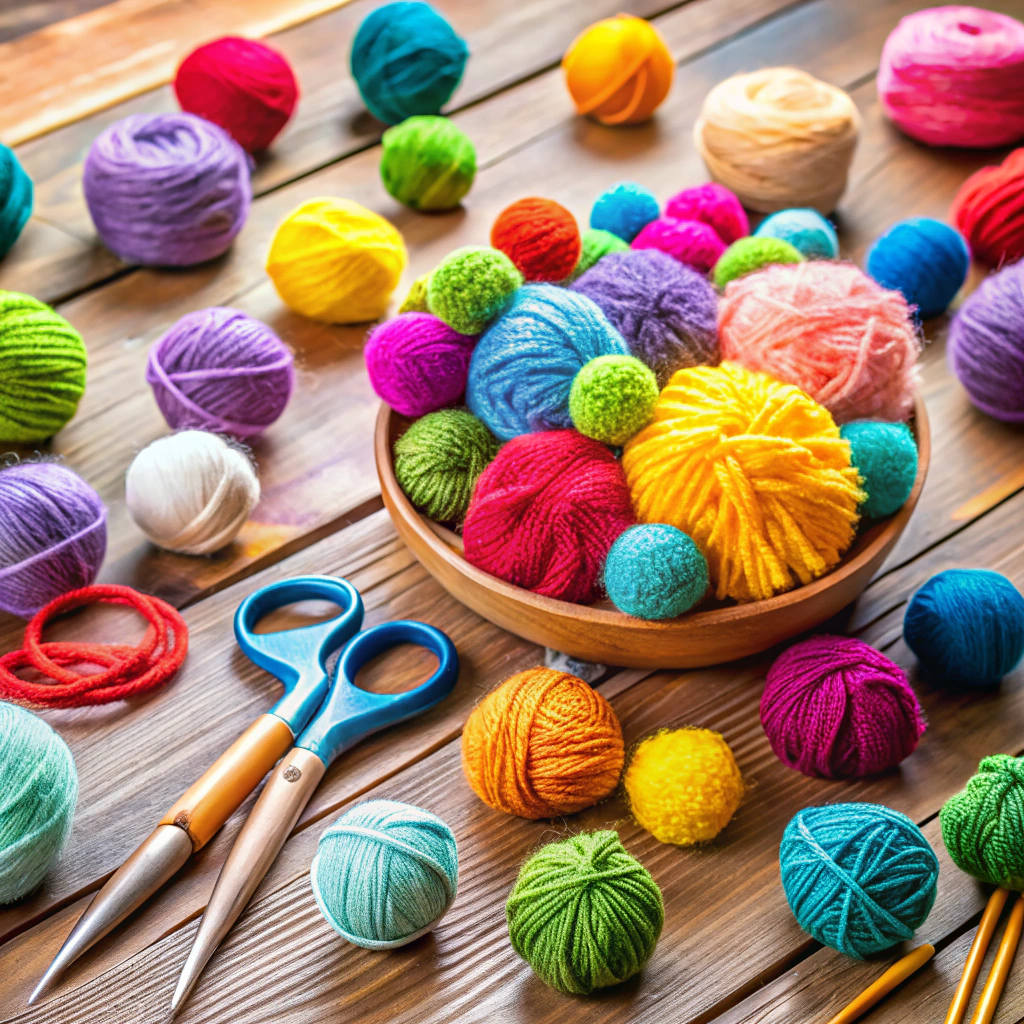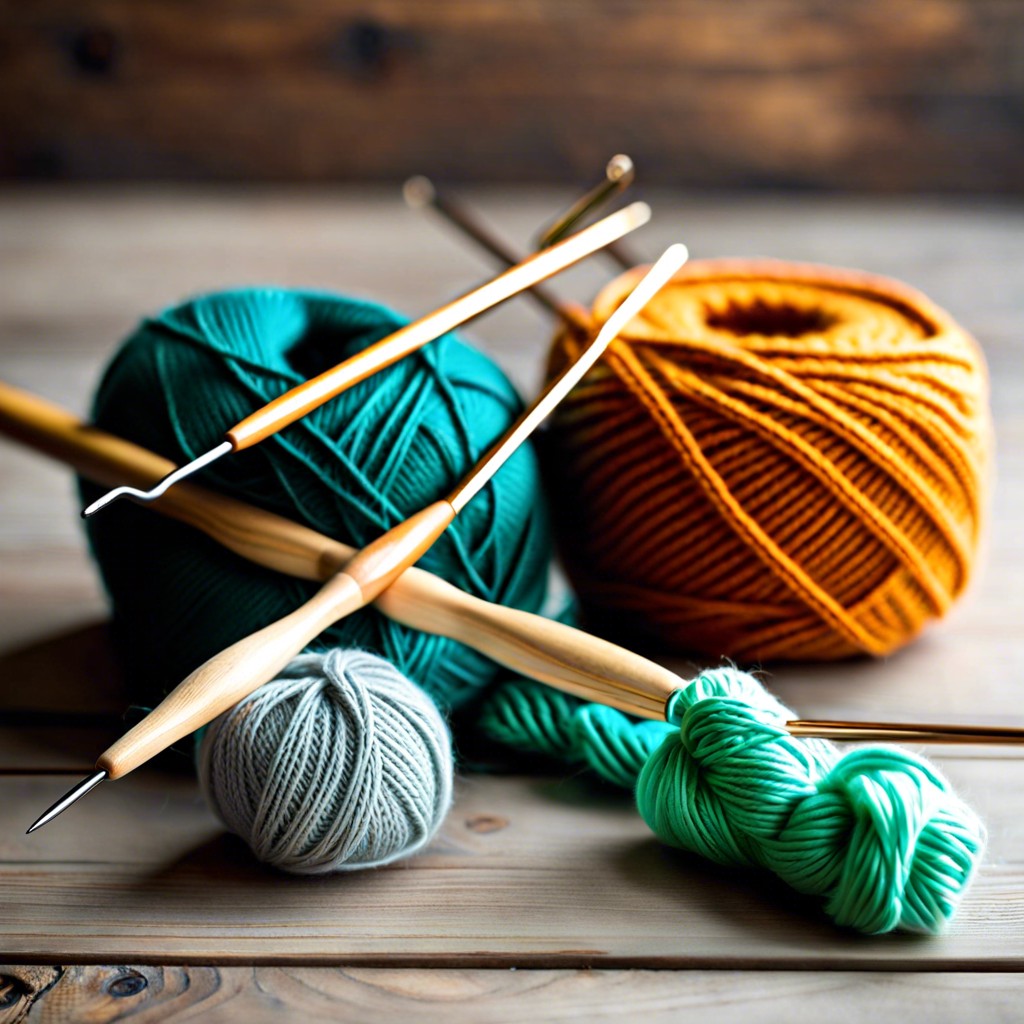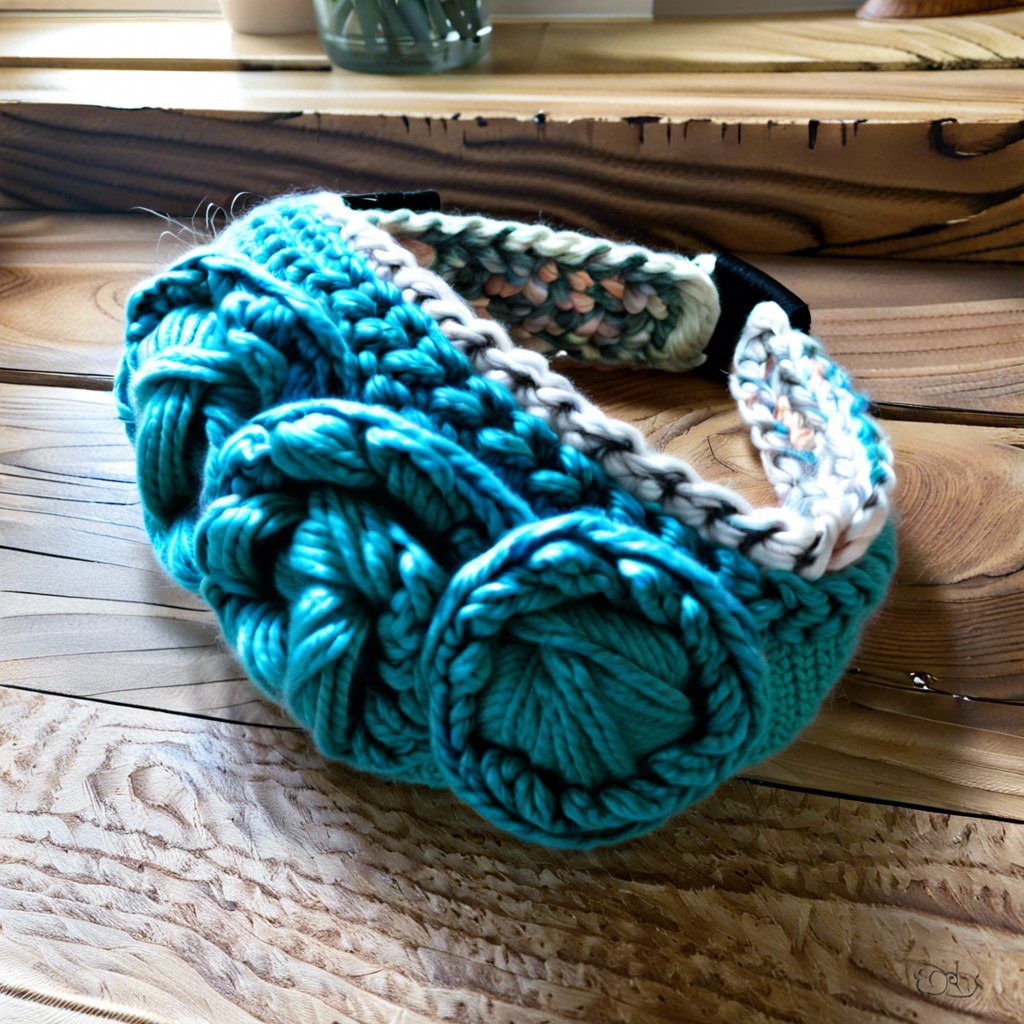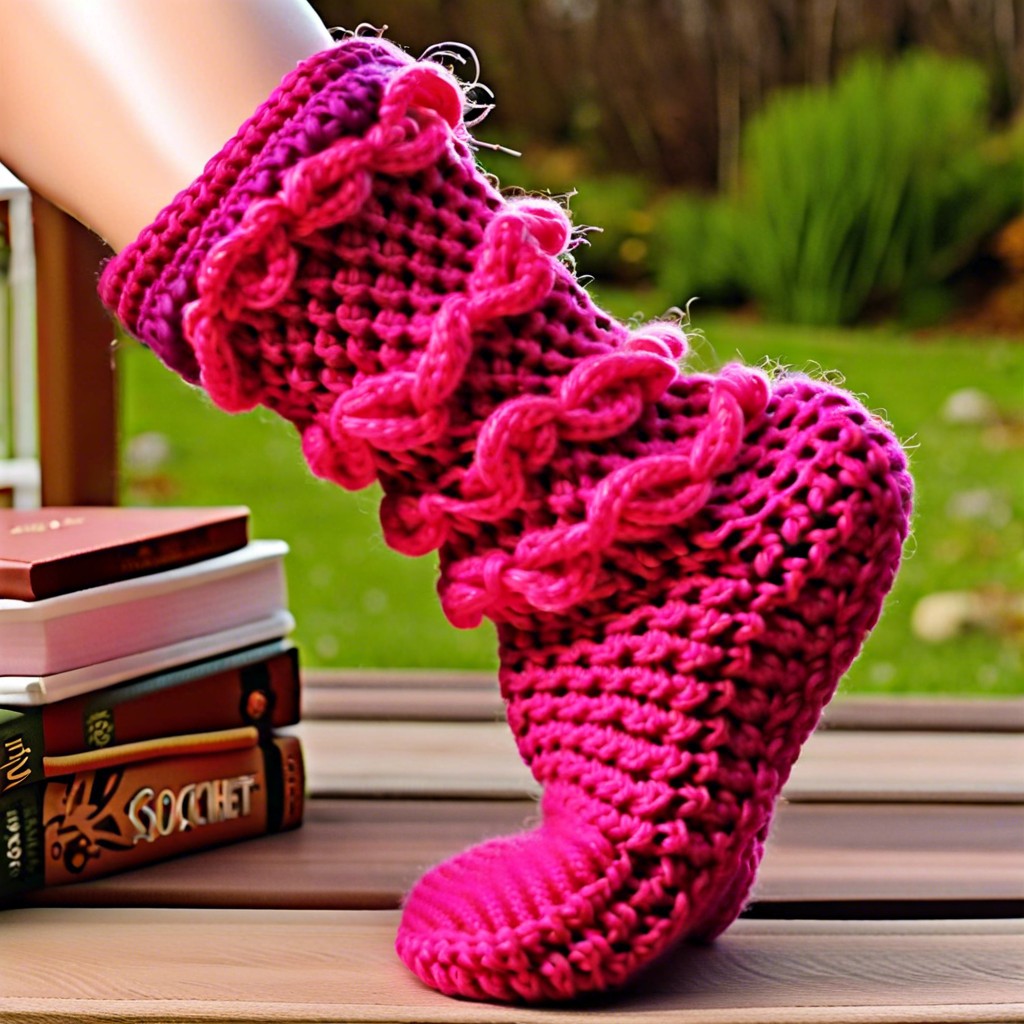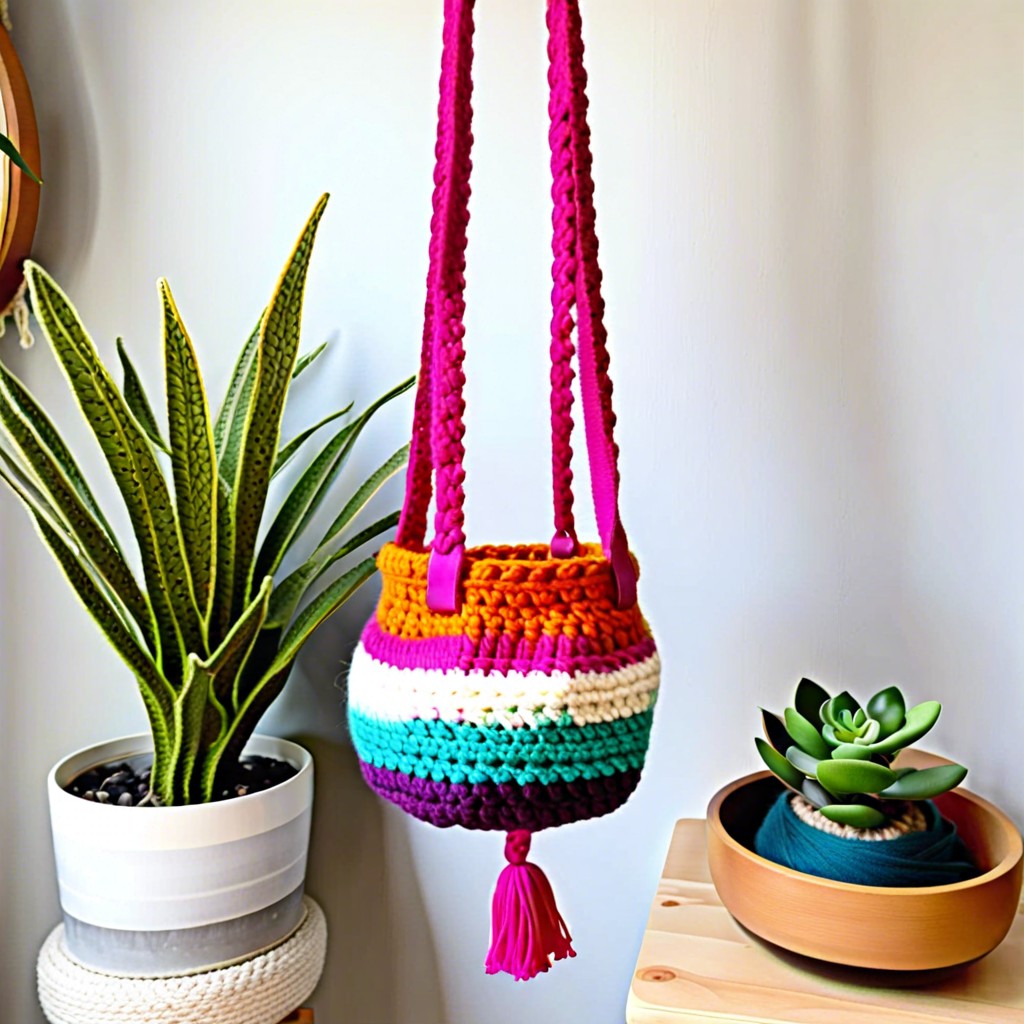Understanding how much yarn to knit a scarf can transform your crafting process because it ensures you’re well-prepared, avoids unnecessary interruptions in your project and guarantees the best quality output.
Determining the amount of yarn required to knit a scarf depends on several factors including the width, length, stitch pattern, and the thickness of the yarn.
On average, a basic scarf (60 inches long and 8 inches wide) using medium weight yarn and a size 8 US needle may consume around 375-500 yards of yarn.
However, intricate stitch patterns or thicker yarns can increase this amount.
This article will delve into a detailed analysis of these factors, providing a comprehensive guide to estimating yarn requirements for various scarf styles.
Key takeaways:
- Yarn requirements depend on width, length, stitch pattern, and yarn thickness.
- A basic scarf (60×8 inches) may need 375-500 yards of yarn.
- Swatch knitting helps calculate personal stitch count for accurate estimation.
- Yarn label info, gauge, and needle size aid in determining yarn needs.
- Yarn requirement tables give estimates, but buy extra yarn as precaution.
Determining the Weight of Preferred Scarf for Yarn Estimation
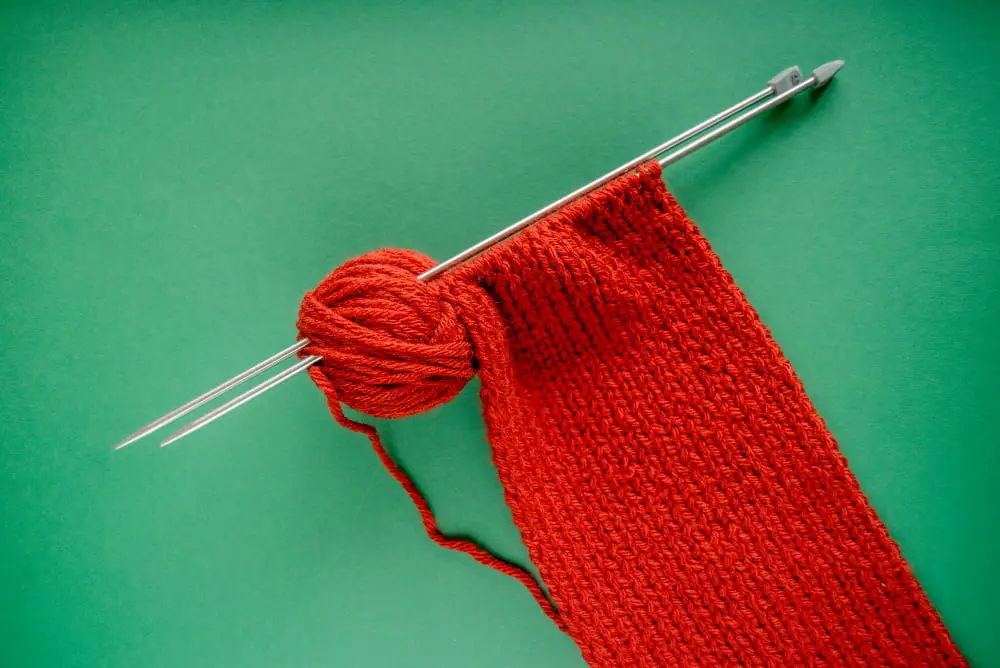
The weight of the intended scarf plays an essential role in the yarn estimation process. First, consider the thickness and density you desire for your scarf. A heavy, dense scarf, for instance, will demand more yarn than a lightweight, airy piece.
Secondly, the type of stitch used impacts how much yarn your scarf will require. For example, a scarf knitted in a complex cable pattern will use more yarn than one in a simple stockinette stitch due to the increased density of the fabric.
Another consideration is the desired length and width of your scarf. A longer or broader piece will require additional yarn. Standard scarves typically measure approximately 6-7 inches in width and 70-80 inches in length, but feel free to adjust these dimensions based on personal preference.
Lastly, remember that every yarn behaves differently and the type chosen can also affect the overall weight. Some yarns puff up a lot and cover a larger area per gram, while denser, thinner yarns cover less. Consider these factors when choosing the best yarn for your scarf.
Understanding Yarn Measurements for Knitting a Scarf
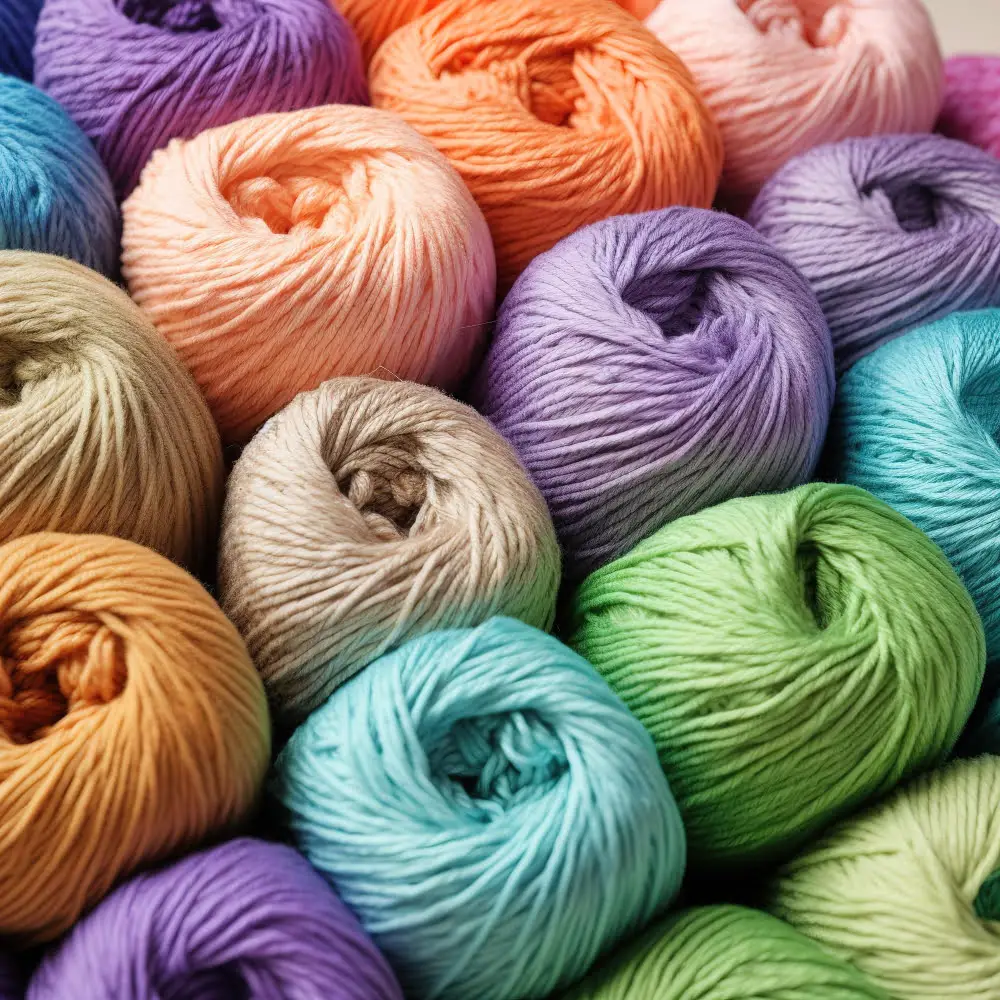
In the world of knitting, yarn measurement plays an indispensable role. Typically, yarns are labeled in terms of their length and weight. The thickness or ply of the yarn can range from lace weight to super bulky, each designed for specific projects. For instance, a scarf aimed to be warm and thick would best be knitted with a medium weight or bulky yarn.
It’s also important to bear in mind that yarn is often sold in skeins or balls, each labeled with the total yardage or meterage and weight. This information proves vital when planning your project, allowing you to purchase the correct amount of yarn from the start.
Different fibers also contribute to the total yarn amount needed. For instance, wool and cotton, despite being the same weight, may not offer the same length of yarn. As a result, choosing a certain type of fiber may necessitate buying more or less yarn.
Additionally, keep in mind the knitting tension or gauge, a measure of how many stitches and rows fit into a 1-inch square. It varies depending on the yarn thickness and needle size used. A tighter gauge means more yarn would be required, and a looser one less. Understanding these nuances will help you make an informed decision about how much yarn you’ll need for your scarf project.
Techniques to Knit a Swatch for Calculating Yarn Requirement
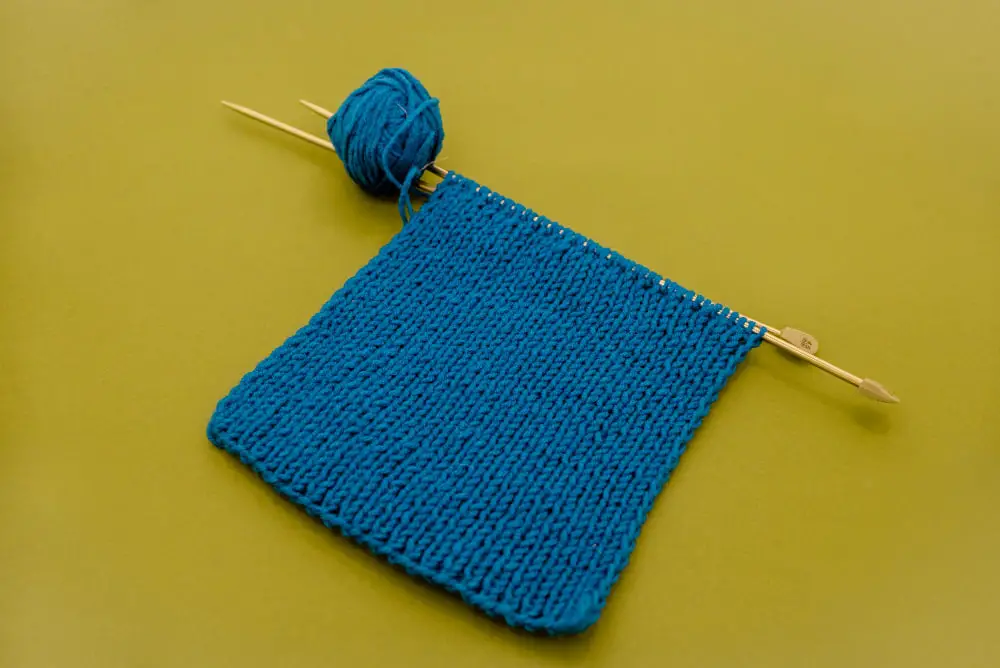
Begging with a correctly sized pair of knitting needles and your chosen yarn, follow these steps to knit a swatch:
1. Cast on around 20-30 stitches, aiming to produce a swatch that’s about 4 inches wide. This size is suggested as it is large enough to get a good average measurement and small enough to avoid excess yarn usage.
2. Use your selected stitch pattern to knit for about 3 to 4 inches. This length provides a consistent measurement and remains reasonable in terms of yarn consumption.
3. Once your swatch is ready, bind off your stitches and lay it flat on a surface without stretching it out.
4. Use a ruler or a tape measure to count how many stitches and rows fall within an inch. It’s better to measure over two inches and divide by two for a more accurate result.
Remember, the purpose of this swatch is to determine your personal stitch count in the selected yarn and needle size. This stitch count will form the foundation of your yarn requirement calculation. Maintaining a consistent tension throughout is vital for accurate results.
Interpreting Yarn Label Information for Your Knitting Project
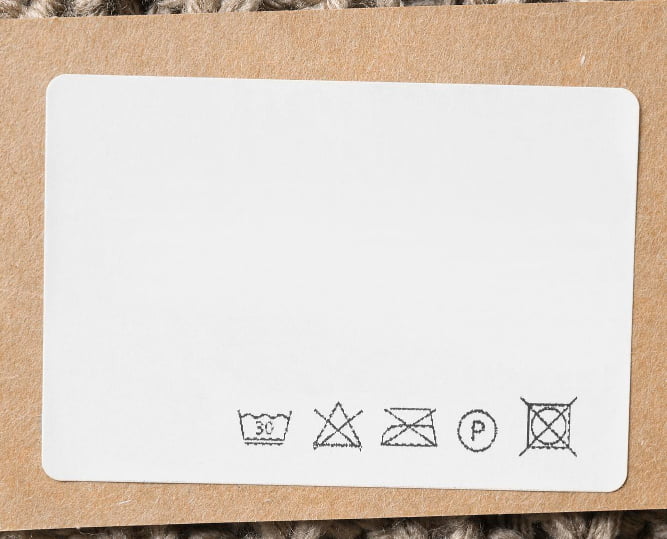
When you’re assessing a yarn label, several elements should draw your attention. First, take note of the yarn weight per unit length, commonly expressed in meters or yards per gram. This measurement gives you a general idea about the thickness of your yarn.
The second element, ‘Gauge‘, corresponds to the number of knit stitches per inch. For instance, if a label indicates a 4″ x 4″ (10 cm x 10 cm) swatch is 20 stitches by 26 rows, that’s your gauge. It is an estimation under standard conditions and with prescribed needle size.
Thirdly, observe the ‘Recommended Needle Size.’ Combined with the gauge, using the advised needle size can help achieve a fabric with desired drape and dimensions.
Lastly, pay attention to the ‘Care Instructions.’ These guidelines help maintain the longevity and quality of your final knitted piece.
Reading and Understanding Knitting Pattern Details
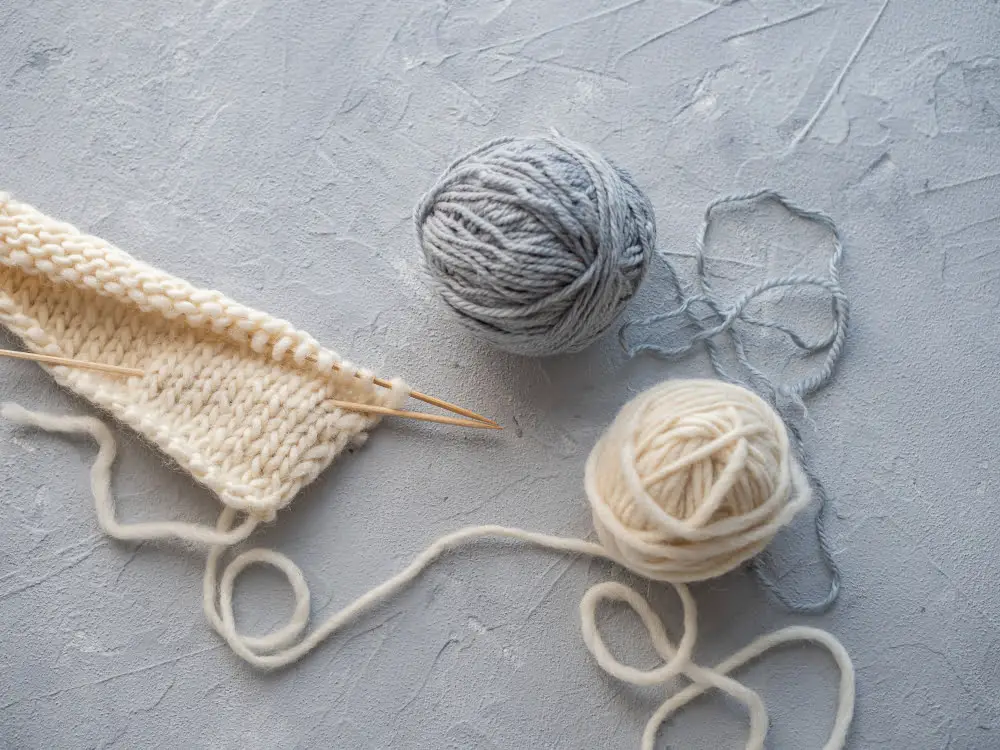
Having the tools to decipher a knitting pattern is key to figuring out your yarn requirements. One of the first details to grasp is the suggested yarn weight, determining how thick or thin the yarn should be. Remember that a higher number means a thicker yarn.
Next, you come across the gauge, expressed in stitches per inch (SPI). Gauge tells you how tight or loose the knitting is expected to be, helping you choose the right type of yarn. The higher the SPI, the finer the yarn needed.
Also, patterns often include a yarn amount expressed in yards or meters. It’s an estimated figure that reflects the total length of yarn required for the project. However, be mindful that the end-yardage might differ a bit depending on a person’s specific knitting technique and tension.
Finally, pay close attention to a seemingly minor detail: the needle size. The pattern suggests a needle size that usually works well with the yarn weight specified. Using different sized needles will alter your gauge, and as a result, your yarn consumption and the final size of your scarf.
By understanding how these details work together, you can make an informed decision about how much yarn you will need to knit your scarf.
Utilizing Yarn Requirement Tables for Scarf Knitting
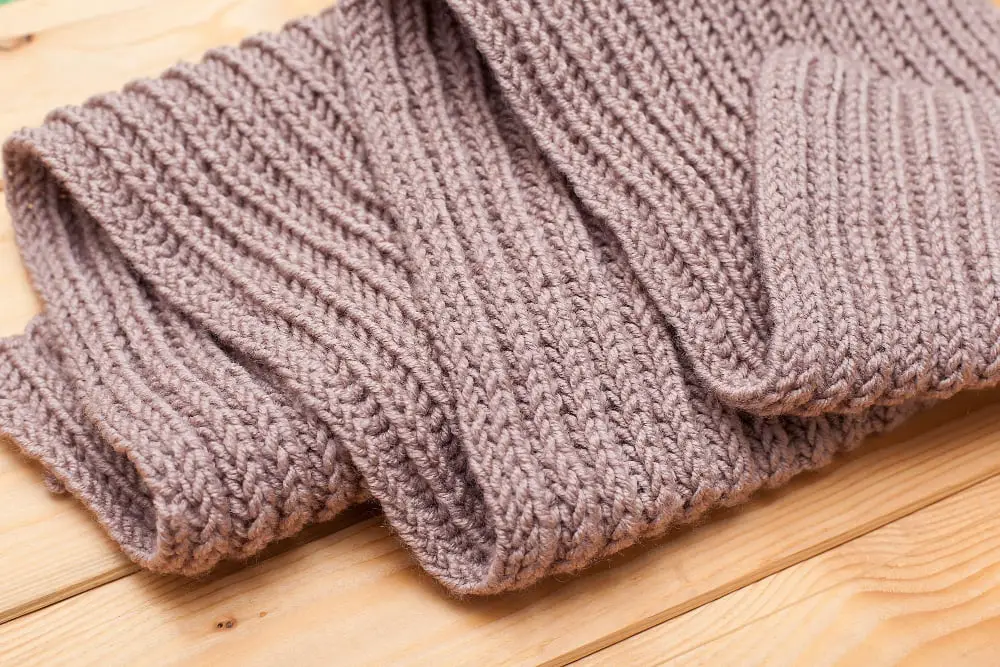
Yarn requirement tables can be your best ally when knitting a scarf, as they provide estimates regarding yarn consumption. These tables usually vary depending on scarf size, knitting technique, and yarn weight. So, keep the following points in mind while using them:
1. General Measurements: Typically, scarves have a width of 6 to 8 inches and a length of about 60 inches. Always cross-verify with your scarf measurements while referring to the table.
2. Yarn Weight: Yarn requirement tables have segregated columns based on yarn weight categories – fingering, sport, worsted, or chunky. Match your yarn’s weight category and look under that specific column.
3. Stitch Density: Knitting technique affects stitch density, which in turn impacts yarn usage. For example, a scarf knitted in garter stitch will use more yarn than stockinette stitch for the same size.
4. Varied Results: Each table is based on averages. Individual knitting style and tension can yield different results. Thus, tables serve as guidance rather than precise calculations.
Remember, these tables aren’t foolproof. Always buy a little extra yarn to ensure your project isn’t left incomplete.
Calculating How Much Yarn Is Needed for a Scarf Based On Scarf Weight and Swatch Results
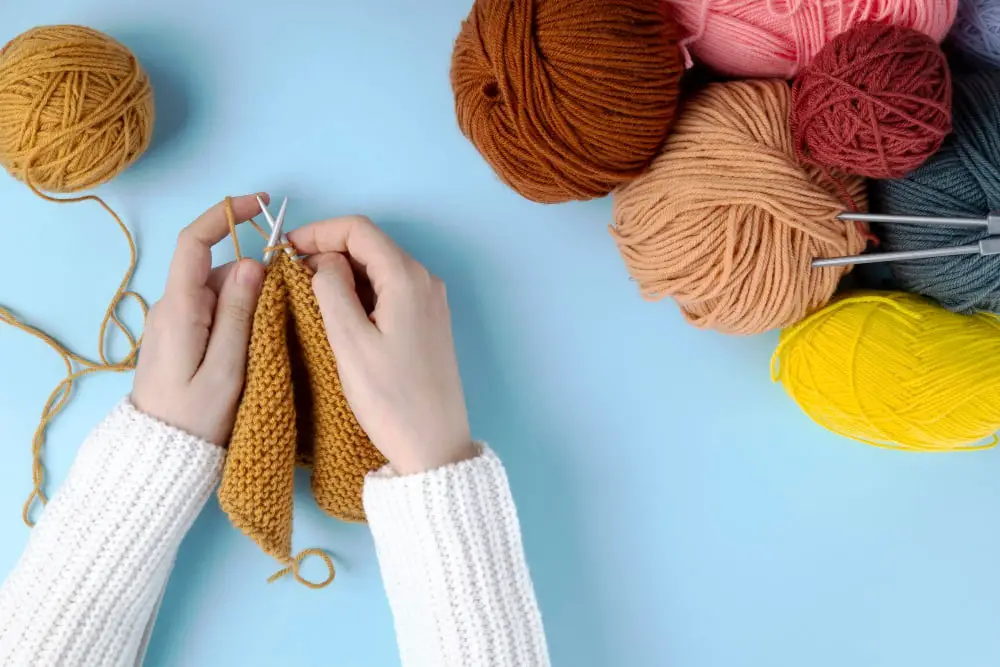
Proceed by taking your pre-knit swatch mass and scarf dimensions into consideration. Begin by measuring the swatch’s length and width. Afterwards, weigh it to understand how much yarn was used to produce that area.
For instance, if a 10x10cm swatch weighs 5g, you’ll know that roughly 5g of yarn is required to cover 100 square centimeters. This information will guide your yarn calculation for the full scarf.
Next, calculate the envisioned scarf’s total surface area. If a scarf is 25cm wide and 150cm long, it has an approximate area of 3,750 square cm. With the swatch measurement, we know that 5g of yarn covers 100 square cm. We can therefore calculate that ((3750/100) x 5) = 187.5g of yarn will be needed for the scarf.
This estimation technique provides a fair idea of how much yarn is required, but it’s prudent to add 10-15% extra to account for any discrepancies, variances in tension, or possible pattern details which may consume more yarn.
Therefore, if you have accounted for 187.5g, adding an extra 15% would mean you’d buy roughly 215g (rounded up for buying convenience) of yarn to ensure you wouldn’t run short during your project.
FAQ
Is one skein of yarn enough for a scarf?
One skein of yarn can indeed be sufficient for crafting a scarf, especially when utilizing simplistic patterns suitable for both beginners and experienced knitters.
Can you make a scarf with 200 yards of yarn?
Yes, one can complete a scarf with 200 yards of yarn, ensuring to select a brand offering at least 150 yards per skein for ample yardage.
What is the average size of a knitted scarf?
The average size of a knitted scarf typically falls between 60 inches (152 cm) and 70 inches (178 cm) in length.
How does yarn weight influence the quantity needed for a scarf?
Yarn weight directly impacts the quantity required for a scarf – the thicker the yarn, fewer yards are needed, whereas lighter, thinner yarns demand more yards to complete the same project.
What influences the length of a knit scarf and how does it relate to yarn quantity?
The length of a knit scarf is influenced by factors like pattern complexity and stitch size, with longer scarves generally requiring more yarn.
How can a knitting pattern affect the amount of yarn required for a scarf?
The knitting pattern can affect the amount of yarn required for a scarf as more intricate, dense patterns often need more yarn than simpler, looser patterns.
